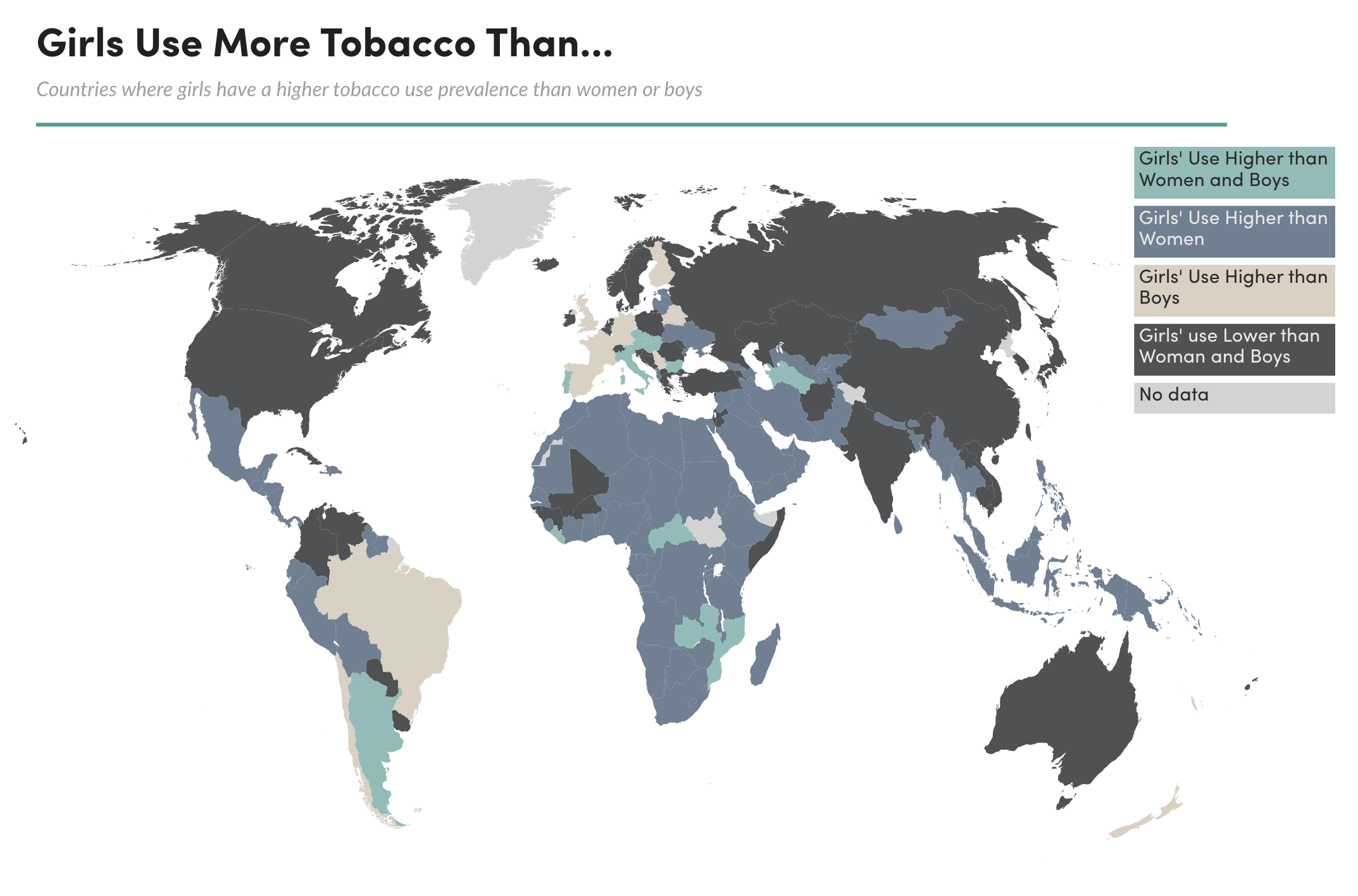In a recent blog post, we wrote about how the World Health Organization has projected that the number of male smokers is expected to decline for the first time ever. Globally, smoking prevalence is lower among women than men, with 8.0% of women estimated to currently use tobacco products compared with 37.5% of men. The gender differences are even more stark within certain countries. For example, in China – smoking prevalence differs by more than 20 fold. If women began to use tobacco at levels approaching those of men in counties like China, the added burden of tobacco-related disease and death would be enormous. Tobacco use already causes approximately 25% of all cancer deaths across the globe.
Not surprisingly, the tobacco industry is observing these dynamics. But from a decidedly different perspective. In their business plans, women represent untapped market opportunity and clear potential for exponential sales growth.
So, how exactly do tobacco companies tap into this market? Numerous studies have shown that global advertisements targeting women have sought to link smoking to independence, modernity, glamour, stress relief, and weight control. The tobacco industry has implied that tobacco use is linked to women’s empowerment, suggesting that smoking symbolizes freedom, and “modern” styles and values. In cultures where women do not smoke, depicting women in tobacco advertising helps to normalize the association between women and tobacco. “Female brands”, “light” cigarettes, low prices, easy availability, and free samples help these marketing strategies succeed among young women. Discount coupons may be especially effective in reaching lower-income women and branded clothing promotions create “walking billboards”.
While female smoking is declining in higher-income countries, mirroring male trends, it is becoming increasingly concentrated among women who are less educated, lower-income, lesbian or bisexual, and/or have mental illness. Tobacco companies effectively market to lower-income people using strategies to keep cigarette prices low, such as distributing discount offers at point-of-sale and via direct mail. In addition, in the US, tobacco companies have developed new brands for low income women and associate images of luxury with smoking in ads targeting African-American women.
Tobacco companies use similar marketing and advertising tactics across the globe. Themes of modernity, social and economic empowerment, and social and physical desirability feature prominently in tobacco advertising. In 2009, the first super slim clove cigarette for women, Avolution, which is packaged in a lipstick tube shape, was introduced in Indonesia. More than 100 brands of slim and super slim cigarettes are available in Russia, some featuring packs designed by fashion designers. Tobacco companies adapt their marketing strategies to cultural contexts, including women’s social and economic position in society. In India, where it may not be culturally fit for women to buy cigarettes openly, companies have offered to deliver them to the home.
Tobacco marketing also seeks to attach meaning to brands, associating products with women’s psychological and social needs. Prominent themes that have been used by cigarette companies to appeal to Asian women include weight control, stress relief, and independence. Insecurity about body shape and size is frequently exploited by tobacco advertising.
Globally, smoking rates among women are declining – from 16.7% of women in 2000 to a projected 6.7% of women in 2025, suggesting that tobacco industry efforts to attract new women smokers are not succeeding. The greatest decline in female smoking has been among Southeast Asian women, where the smoking rate in 2025 is projected to be less than 1/3 of that in 2000. However, the lowest female smoking rates (about 3%) are seen among women in Africa, the Eastern Mediterranean, and Western Pacific, where women either have few resources or smoking among women is largely seen as socially unacceptable.
While female smoking prevalence is lower than male smoking prevalence in every country in the world, save for Iceland and Serbia, many countries face a potential rising tide in female tobacco use in the years to come. Unfortunately, in 123 countries girls have a higher tobacco use prevalence than adult women. And in 28, girls have a higher tobacco use prevalence than boys. A rising tide of female use is possible in the years to come, or we could see more parity in smoking rates by sex.

Given that women often smoke for different reasons than men, effective tobacco control strategies may need to target women differently. In countries where women are typically of a lower economic status than men, they may be more price sensitive to tax or price increases, increasing the salience of including limits on price promotions in tobacco control policy reforms. Restrictions on tobacco marketing may be particularly important in reducing female-targeted marketing, or counter-marketing strategies may need to address women’s tobacco use separately. Smoke-free policies may also be particularly beneficial for women, who make up 70 percent of the global hospitality workforce, which includes restaurant and bar workers.
As more countries enact these and other policies known to reduce tobacco use, women’s tobacco use should be expected to decline going forward.